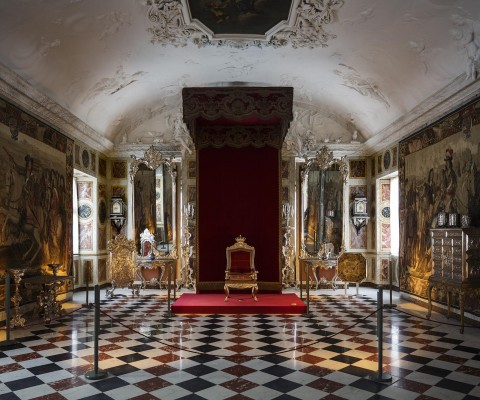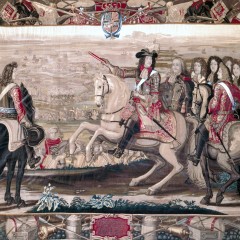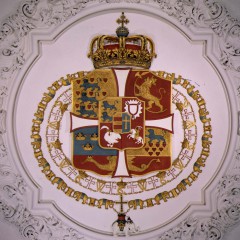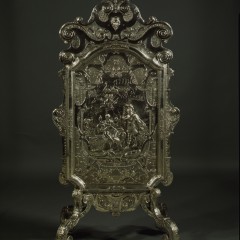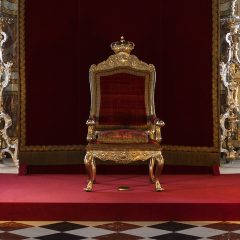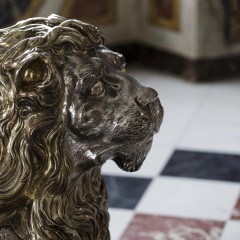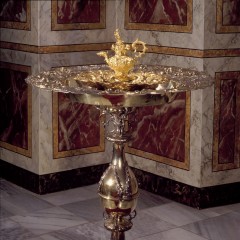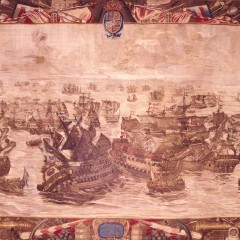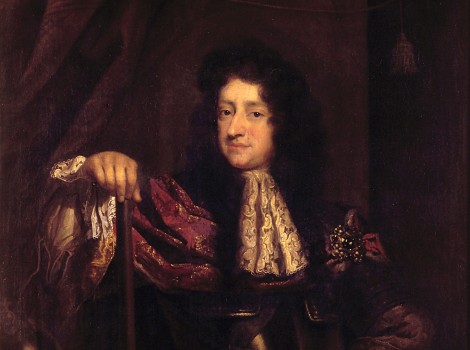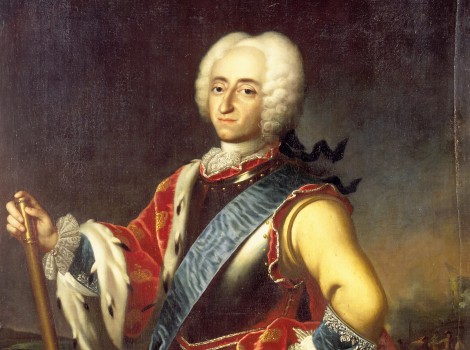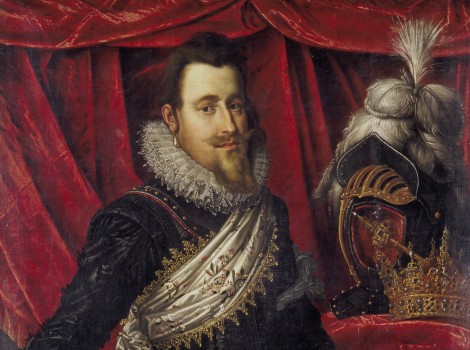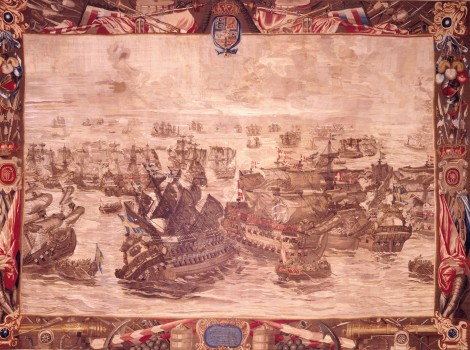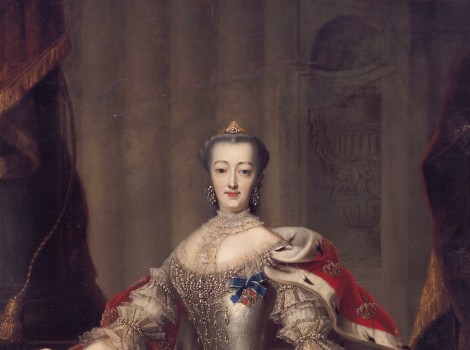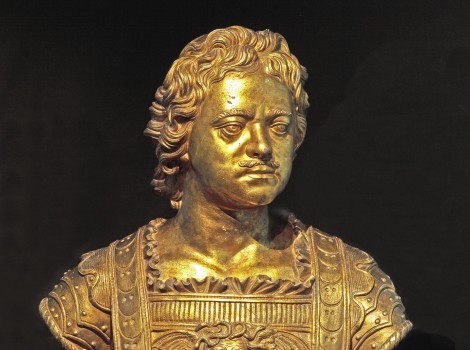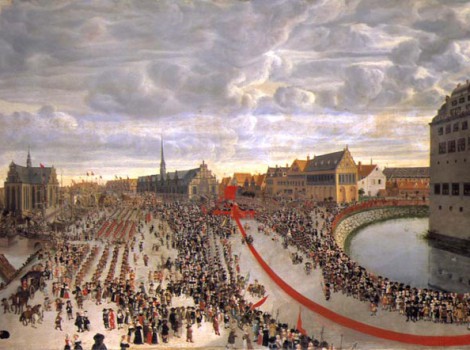21 The Knights’ Hall
ROOM 21: The hall, which was the last room to be furnished, was completed in 1624. It was originally intended and used as a ballroom. Around 1700 its functions had changed and was mostly used for audiences and banquets. The name “The Knights’ Hall” was attached during Romanticism.
Christian V had the hall partly modernised with twelve tapestries showing the King’s victories in the Scanian War, 1675-1679. The tapestries were later moved to Christiansborg Palace, but were returned in 1999. The present stucco ceiling is from the beginning of the 18th century, showing the Danish coat of arms surrounded by the Orders of the Elephant and of the Dannebrog. The side reliefs depict historical events from the first years of the reign of Frederik IV: the liberation of the serfs, the creation of the dragoons and of the land militia among them. The four large paintings by Hendrick Krock in the ceiling, represents the four Regalia: the crown, the orb, the sword and lastly the scepter.
Among the main attractions of Rosenborg are the coronation chairs, intended for the King and Queen, and used at the coronations of all absolutist kings, guarded by the three silver lions. The Knights’ Hall also contains a large collection of silver furniture, of which most is from the 17th century.

 Dansk
Dansk
 English
English
 Deutsch
Deutsch

